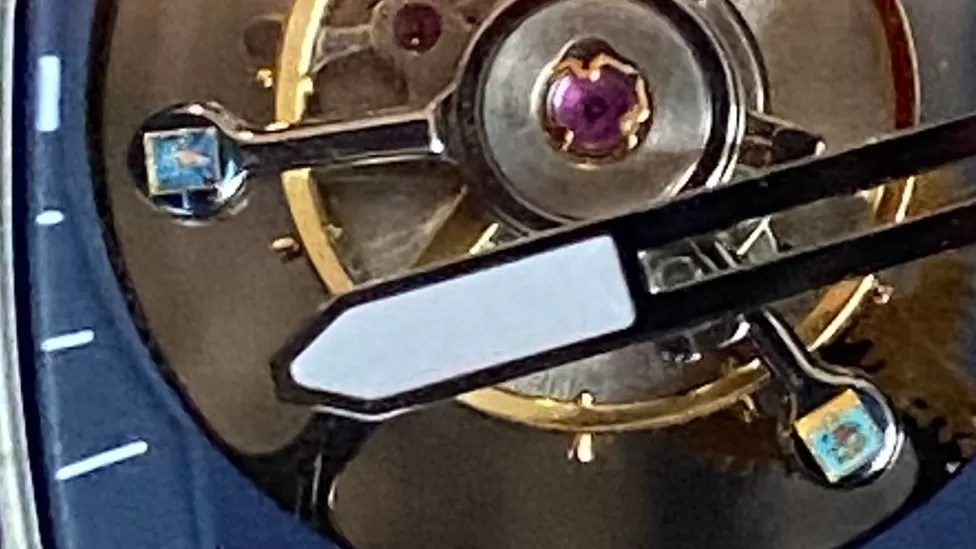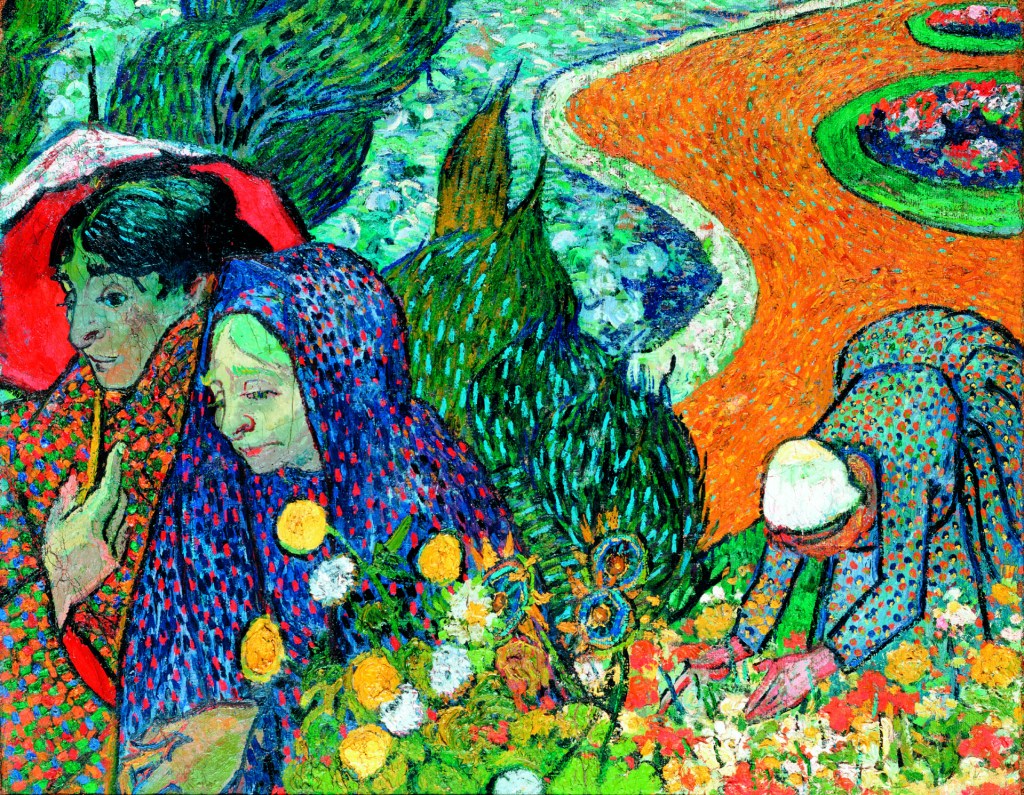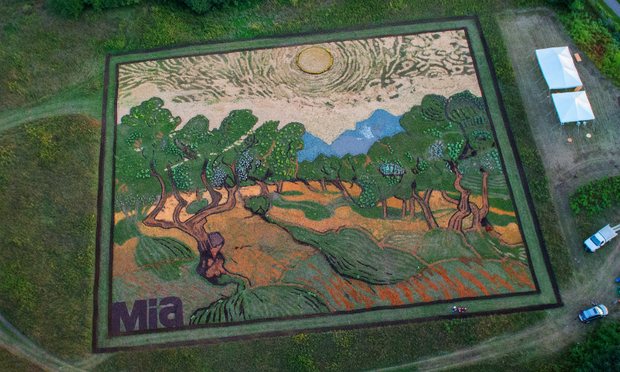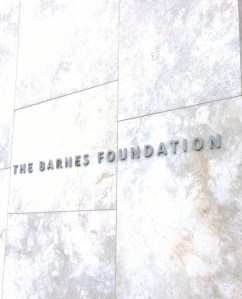
Photo: David A. Lindon/BBC.
These micro paintings cannot be seen with the naked eye.
We were speaking of miniatures. Today’s story is about an artist who goes beyond miniature to microscopic: art that can’t be seen with the naked eye, art that has to be painted at night to avoid the slightest jostling from traffic.
Cathy Free wrote about the artist at the Washington Post. “Late at night while most everyone in the coastal English town of Bournemouth is sleeping, David A. Lindon sits in front of a microscope making the tiniest of artworks. His creations are so minuscule and precise, he steadies his hands by only moving them between his own heartbeats.
“One twitch — or worse, something as disastrous as a sneeze — and his latest painting or sculpture could disappear into the fibers of his carpet or be lost forever in the jumble of tools on his desk. … A few years ago, at least one piece of artwork became lodged inside Lindon’s nose, never to be seen again.
“ ‘I inhaled it by accident, and poof. It was gone,’ he said. ‘To do what I do, you practically have to work yourself into a trance.’ …
“He started out putting each of his tiny masterpieces inside the eye of a needle or on top of a pin. His latest work is rotating as a wearable miniature art gallery inside a watch.
“To celebrate the 50th anniversary of the Van Gogh Museum in the Netherlands last month, Lindon collaborated with Edward Hammond, the founder of Hammond Galleries in the United Kingdom, to re-create three of Vincent van Gogh’s most famous paintings — ‘Starry Night,‘ ‘Sunflowers‘ and ‘Self-Portrait‘ in micro form. … The project took him six months.
“The watch with the microscopic Van Goghs is now on view at Hammond Galleries, valued at $190,000. …
“Lindon has three other pieces on display in New York this summer at an exhibition called ‘Small Is Beautiful,’ and he said he’s next hoping to showcase the world’s smallest zoo. …
“ ‘What I do doesn’t take up much space, but it’s very, very hard to do,’ he said. ‘It takes hundreds of hours.’ …
“Lindon, a former engineer who once worked in the aircraft industry, said he developed a fascination [with] ultra small-scale art after watching a TV special in the U.K. about artists who enjoyed creating diminutive works.
“In 2019, he said he decided to create a few of his own pieces and spent months working on his painstaking technique. His first piece was a wee Dalmatian that he made for his daughter, Abigail. It measured about a half of a millimeter long, and was crafted from materials that included porcelain, nylon, carbon fiber and precious metals.
“ ‘She suggested that I put it online, so I posted it on Facebook and Instagram,’ he said. ‘When people went nuts over it, I knew I must be on to something.’
“Lindon experimented with materials such as carpet fibers and crushed micro pigments, and he developed his own small tools, including a blade made from a hypodermic needle with a diamond fragment on the tip, and brushes made with fibers from silkworms.
“ ‘People ask me, “Do you paint with the leg of a fly?” But I actually use micro hooks and shovels that I’m constantly remaking,’ he said. …
“His work is reminiscent of the famed micro artist Willard Wigan, who for decades has painted with materials such as human eyelashes, and has won two Guinness World Records for the tiniest art made by a human hand. Other micro artists — including Hasan Kale, who paints on a grain of rice, as well as almond slivers, and Salavat Fidai, who makes sculptures on the tip of a pencil — have gained notoriety for their talents in the world of tiny art.
“Lindon said he usually works late at night so vibrations from traffic won’t disturb his concentration or cause his art to tremble under the microscope. ‘One mistake and it’s gone,’ he said. …
“His most frustrating loss was a mini reproduction of Pablo Picasso’s ‘Weeping Woman,‘ Lindon said.
“ ‘She has lots of color and is very angular with lots of straight lines,’ he said. ‘Basically, she’s a jigsaw. Earlier this year, I got three-quarters of the way through this complicated piece when my fingers suddenly twitched and I ripped the painting apart.
“ ‘I could have cried, but I carried on,’ Lindon added. …
“He said that mishaps happen less frequently now that he has taught himself to control his heartbeat by slowing down his breathing and relaxing.”
People sure come up with the most amazing hobbies! More at the Post, here.










